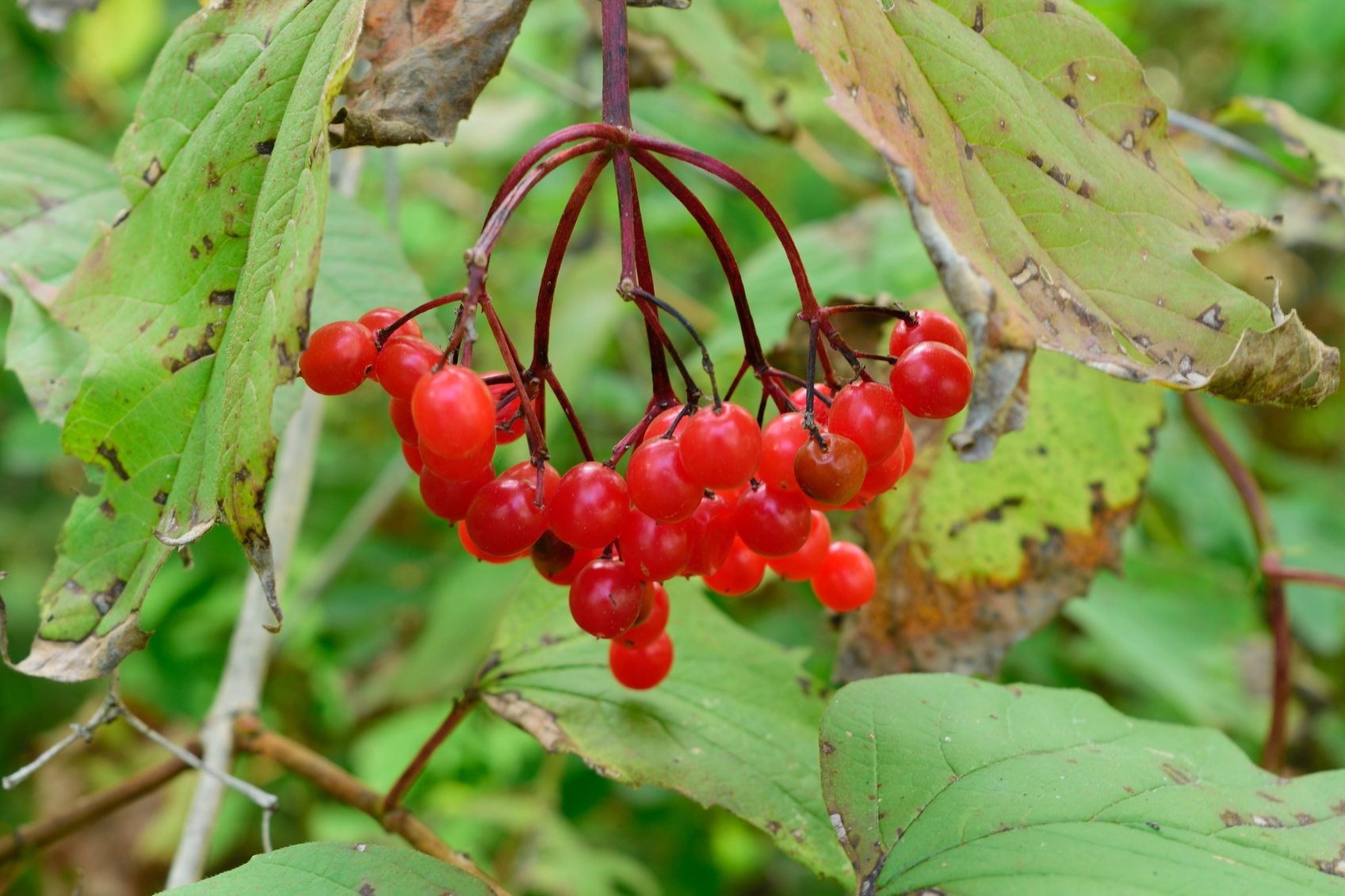Highbush Cranberry Plants: Caring For American Cranberry Shrubs


It might surprise you to learn that the American highbush cranberry isn’t a member of the cranberry family. It is actually a viburnum, and it has many features that make it an ideal edible landscape shrub. Read on for American cranberry bush information.
American Cranberry Viburnum Information
The flavor and appearance of the fruit from highbush cranberry plants are a lot like true cranberries. The American cranberry (Viburnum opulus var. americanum) has tart, acidic fruit that is best served in jellies, jams, sauces and relishes. It is not very tasty raw. The fruit ripens in fall—just in time for the fall and winter holidays. Highbush cranberry plants are showy in spring when the flowers bloom against a backdrop of lush, dark green foliage. Like lacecap hydrangeas, the flower clusters have a center made up of small fertile flowers, surrounded by a ring of large, sterile flowers. These plants take center stage again in fall when they are loaded with bright red or orange berries that hang from stems like cherries.
How to Grow American Cranberry
Highbush cranberry plants are native to some of the coldest regions of North America. They thrive in U.S. Department of Agriculture plant hardiness zones 2 through 7. The shrubs grow up to 12 feet (3.7 m.) tall with a similar spread, so give them plenty of room. They need full sun or partial shade. More hours of direct sunlight means more berries. The plants tolerate poorly drained soil, but live longest when the soil is moist but well drained. When planting in the lawn, remove at least a four-foot (1.2 m.) square of sod and dig deeply to loosen the soil. Plant in the center of the square, and then mulch deeply to deter weeds. Highbush cranberries don’t compete well with grass and weeds, so you should keep the bed weed-free until the plant is a couple of years old. After two years, the shrub will be large and dense enough to shade out all but the most stubborn weeds.
Caring for American Cranberry
Caring for American cranberry bushes is easy. Water weekly in the absence of rain during the first year. In subsequent years, you only need to water during prolonged dry spells. If you have good soil, the plant probably won’t need fertilizer. If you notice that the leaf color begins to fade, use a small amount of nitrogen fertilizer. Too much nitrogen inhibits fruit. Alternatively, work an inch or two of compost into the soil. American cranberries grow and produce just fine without pruning, but they grow into massive plants. You can keep them smaller by pruning in spring after the flowers fade. If you’re fine with a huge plant, you might want to do a little pruning at the tips of the stems to keep the shrub looking neat and in control.
Gardening tips, videos, info and more delivered right to your inbox!
Sign up for the Gardening Know How newsletter today and receive a free copy of our e-book "How to Grow Delicious Tomatoes".

Jackie Carroll has written over 500 articles for Gardening Know How on a wide range of topics.
-
 Looking For Plants To Give You The Soft And Fuzzies? Try These 5 Fuzzy Leaf Plant Options
Looking For Plants To Give You The Soft And Fuzzies? Try These 5 Fuzzy Leaf Plant OptionsLovers of texture, drama, silver foliage and tactile plants will adore these special sensory garden additions. These fuzzy leaf plant options will leave you all aglow
By Susan Albert
-
 Get Ready For A Summer Of Hummers! Grow These Full Sun Hummingbird Plants and Flowers
Get Ready For A Summer Of Hummers! Grow These Full Sun Hummingbird Plants and FlowersIf you’re lucky enough to enjoy a sunny backyard, make sure you are maxing out on your pollinator opportunities and grow these full sun hummingbird plants and flowers
By Tonya Barnett